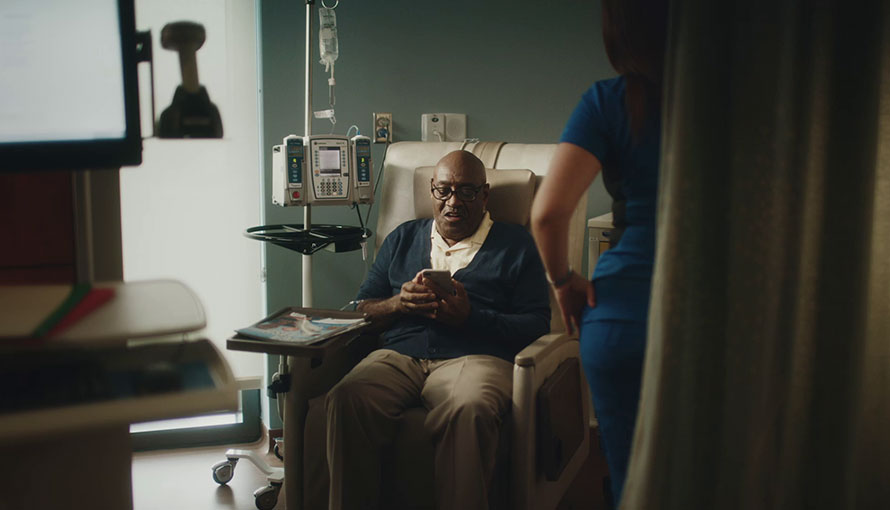Kaposi Sarcoma

Kaposi sarcoma is a type of cancer that develops in the lining of the blood and lymph vessels as a result of a human herpesvirus-8 (HHV-8) infection. An HHV-8 infection can cause the cells lining the blood and lymph vessels to begin dividing uncontrollably, and if the dividing cells invade surrounding tissues, the buildup of excess cells can form lesions in various parts of the body.
Types of Kaposi sarcoma
Researchers have classified Kaposi sarcoma into four different types based on what populations the malignancy typically affects. With that being said, the changes that occur within the cancerous cells are highly similar across all four groups.
Epidemic (AIDS-associated) Kaposi sarcoma
This is the most common type of Kaposi sarcoma occurring in the U.S. This form of the malignancy develops in individuals infected with the human immunodeficiency virus (HIV), which is the virus that leads to acquired immunodeficiency syndrome (AIDS). When HIV severely damages someone’s immune system, it makes that person more susceptible to various types of infections, including the one resulting in Kaposi sarcoma. Once someone who’s HIV-positive develops Kaposi sarcoma, it means that they officially have AIDS.
Because HIV can lead to Kaposi sarcoma and various other complications, it’s important to promptly treat an infection. Studies have shown that highly active antiretroviral therapy (HAART) can reduce an HIV-positive person’s risk of developing Kaposi sarcoma. And when someone already has Kaposi sarcoma, HAART can help slow down the progression of the malignancy.
Classic (Mediterranean) Kaposi sarcoma
This type of Kaposi sarcoma primarily affects older individuals of Eastern European, Mediterranean or Middle Eastern descent, and it tends to be more common in men than in women. When compared to other forms of the malignancy, this one generally produces slower-growing lesions, and new lesions don’t form as frequently. People with this type of Kaposi sarcoma often have at least one lesion present on their leg, their ankle or the sole of their foot.
Endemic (African) Kaposi sarcoma
This form of Kaposi sarcoma affects individuals living in Equatorial Africa and is most common in those under the age of 40. Because the human herpesvirus-8 (HHV-8) infection rate is significantly higher in Africa than it is in other areas, and because certain other conditions affecting many Africans can weaken the immune system (e.g., malaria and malnutrition), residents of this region have a considerably higher risk of developing Kaposi sarcoma.
Iatrogenic (transplant-related) Kaposi sarcoma
This type of Kaposi sarcoma affects individuals who have taken immunosuppressive medications after an organ transplant. While these drugs certainly serve an important purpose—preventing the person’s immune system from rejecting their new organ—they can also increase the chances of developing Kaposi sarcoma. Once this malignancy has occurred, either lowering the medication dosage or stopping it completely may help reduce the size of Kaposi sarcoma lesions, but it’s important to carefully follow the treating physician’s recommendations.

Kaposi sarcoma symptoms
As was noted above, Kaposi sarcoma is primarily characterized by the formation of lesions in certain areas of the body. The lesions associated with Kaposi sarcoma are most likely to develop on the skin of the face, legs or feet. Lesions may also appear in the mouth, lymph nodes or genital area, and in rare cases, may form in the lungs or digestive tract.
Additional Kaposi sarcoma symptoms will vary depending on where the lesions develop within the body:
- Mouth – Lesions in the mouth can make it difficult to eat, swallow and speak.
- Lungs – Lesions in the lungs can cause coughing and difficulty breathing and may also lead to a chest infection.
- Legs – If lesions on the legs produce painful swelling (lymphoedema), it may be difficult to move around.
- Lymph nodes – Lesions in the lymph nodes can cause painful swelling within the arms and legs.
- Digestive tract – When lesions form in the digestive system, it can cause stomach pain and diarrhea.
Some Kaposi sarcoma patients also experience a general feeling of being sick (malaise). The rate at which symptoms progress will depend on the type of Kaposi sarcoma present—for some individuals, symptoms rapidly worsen in months or even weeks, while others experience a slower progression over the course of many years.
What do Kaposi sarcoma lesions look like?
When Kaposi sarcoma produces lesions on the skin, they often resemble bruises. These blotches can be either flat or raised, and may be brown, purple or red. It’s important to note that despite how disfiguring Kaposi sarcoma lesions may appear, the lesions themselves generally are not painful. In many cases, it’s the resulting swelling that may cause pain or discomfort.
Kaposi sarcoma causes and risk factors
As noted above, Kaposi sarcoma is caused by a human herpesvirus-8 (HHV-8) infection. This type of infection is more likely to develop in an individual with a weakened immune system. So, someone will have a higher risk of contracting an HHV-8 infection—and in turn, Kaposi sarcoma—if they have human immunodeficiency virus (HIV) or take immunosuppressant medication (for example, corticosteroids). As was noted above, older men of Eastern European, Mediterranean or Middle Eastern descent, as well as young people in Africa, are also more likely to develop Kaposi sarcoma.
Kaposi sarcoma diagnosis
The method used to diagnose Kaposi sarcoma will depend on where the resulting lesions are located. For example, if someone has a skin lesion that suggests the presence of Kaposi sarcoma, a physician will typically perform a biopsy to confirm the diagnosis. But if the person’s lesions are internal, then the physician will likely order one or more of the following diagnostic tests:
- Bronchoscopy
- Chest X-ray
- Computed tomography (CT) scan
- Colonoscopy
- Fecal occult blood test
- Upper endoscopy
Kaposi sarcoma treatment
Treatment for Kaposi sarcoma will vary based on factors such as the patient’s overall health, the number and location of lesions present and whether the lesions are causing any discomfort. For example, small skin lesions may be treated using:
- Surgery (excision)
- Burning (electrodessication)
- Freezing (cryotherapy)
- Low-dose radiation therapy
- Chemotherapy
- Retinoid application
It’s also common for Kaposi sarcoma treatment to involve taking steps to strengthen the immune system. Individuals with compromised immune systems need to be extra cautious, since many of the treatments traditionally used to fight cancer—for example, chemotherapy—could be detrimental to their health.
Treatment for Kaposi sarcoma at Moffitt
If you’re experiencing the symptoms of Kaposi sarcoma, it’s important to not delay seeking professional advice. Fortunately, you can turn to Moffitt Cancer Center, the only National Cancer Institute Comprehensive Cancer Center based in Florida. Our experienced providers are highly skilled at treating Kaposi sarcoma and various other types of sarcomas, and after diagnosing exactly what’s causing your symptoms, we’ll develop a customized treatment approach that’s perfectly individualized to your needs.
You can request a consultation at Moffitt Cancer Center by calling us at 1-888-663-3488 or filling out a new patient registration form online—no referral is needed. When you do, we’ll connect you to a cancer expert as soon as possible. We know how stressful it can be to wait on a potential cancer diagnosis, so we’re taking steps to ensure that our patients have the support they need every step of the way.
References
American Cancer Society: What Is Kaposi Sarcoma?
United Kingdom National Health Service: Kaposi’s Sarcoma
